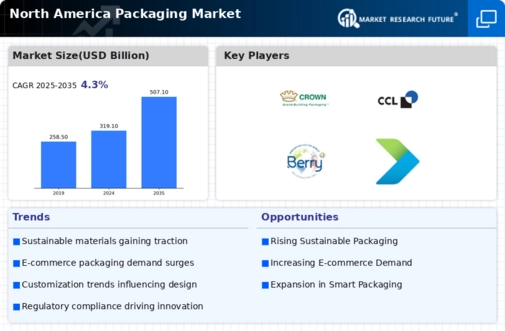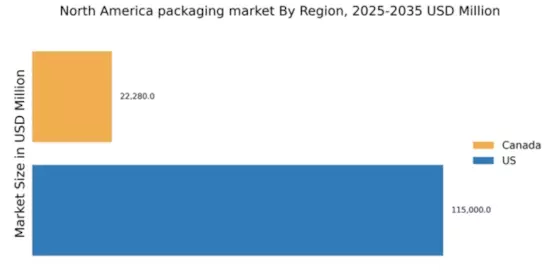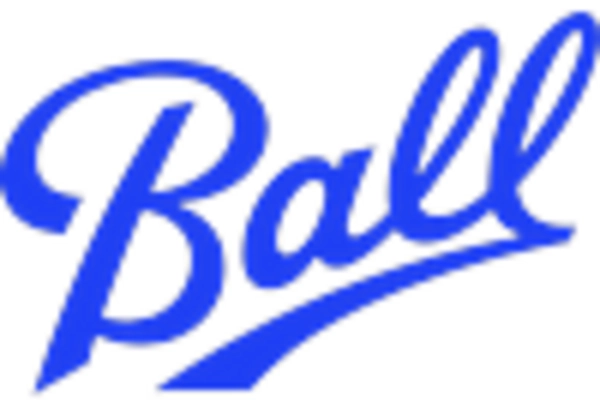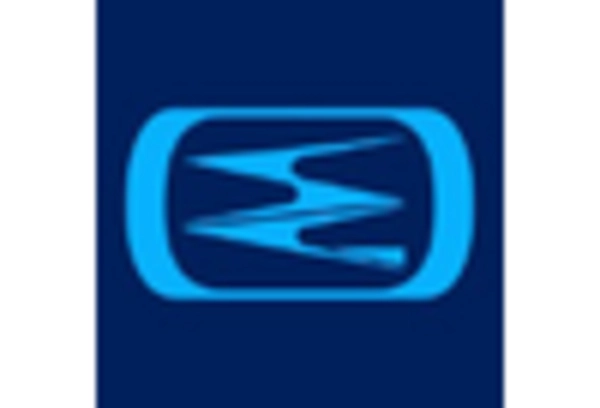Regulatory Compliance and Standards
Regulatory frameworks governing packaging materials and waste management are increasingly stringent in North America. The packaging market is significantly influenced by these regulations, which aim to reduce environmental impact and promote recycling. For instance, various states have implemented laws mandating the use of recyclable materials in packaging. Companies must navigate these regulations to avoid penalties and maintain market access. This compliance not only drives innovation in packaging design but also encourages the adoption of sustainable practices. As a result, the packaging market is evolving, with businesses investing in compliant materials and processes to align with regulatory expectations.
Technological Innovations in Packaging
Technological advancements are reshaping the packaging market in North America. Innovations such as smart packaging, which incorporates sensors and QR codes, enhance consumer engagement and product tracking. Additionally, automation in packaging processes improves efficiency and reduces costs. The market is projected to grow at a CAGR of 4.5% over the next five years, driven by these technological developments. Companies are increasingly investing in research and development to leverage these technologies, aiming to improve product shelf life and reduce waste. This trend indicates a shift towards more intelligent and efficient packaging solutions, which are likely to dominate the market landscape.
Consumer Demand for Eco-Friendly Solutions
The growing consumer preference for eco-friendly packaging solutions is a pivotal driver in the packaging market. As awareness of environmental issues increases, consumers in North America are actively seeking products that utilize sustainable materials. This shift is reflected in market data, indicating that approximately 70% of consumers are willing to pay a premium for sustainable packaging. Consequently, companies are compelled to innovate and adopt biodegradable, recyclable, or reusable materials to meet this demand. The packaging market in North America is thus witnessing a transformation, with brands prioritizing sustainability in their packaging strategies to enhance their market appeal and align with consumer values.
Rise of Online Retail and Delivery Services
The surge in online retail and delivery services has a profound impact on the packaging market. As e-commerce continues to expand, the demand for packaging that ensures product safety during transit is paramount. North American consumers expect their online purchases to arrive in pristine condition, prompting companies to invest in robust packaging solutions. This trend is reflected in market data, which shows that the e-commerce packaging segment is expected to grow by 5.2% annually. Consequently, businesses are adapting their packaging strategies to cater to this demand, focusing on materials that provide durability while also considering sustainability.
Brand Differentiation through Packaging Design
In a competitive marketplace, brand differentiation is crucial, and packaging design plays a vital role in this strategy. The packaging market in North America is increasingly influenced by the need for unique and eye-catching designs that resonate with consumers. Companies are leveraging innovative materials and creative designs to stand out on retail shelves. This focus on aesthetics not only enhances brand visibility but also influences purchasing decisions. Market analysis suggests that well-designed packaging can increase sales by up to 30%. As a result, businesses are prioritizing packaging design as a key component of their marketing strategies, driving growth in the packaging market.


















Leave a Comment